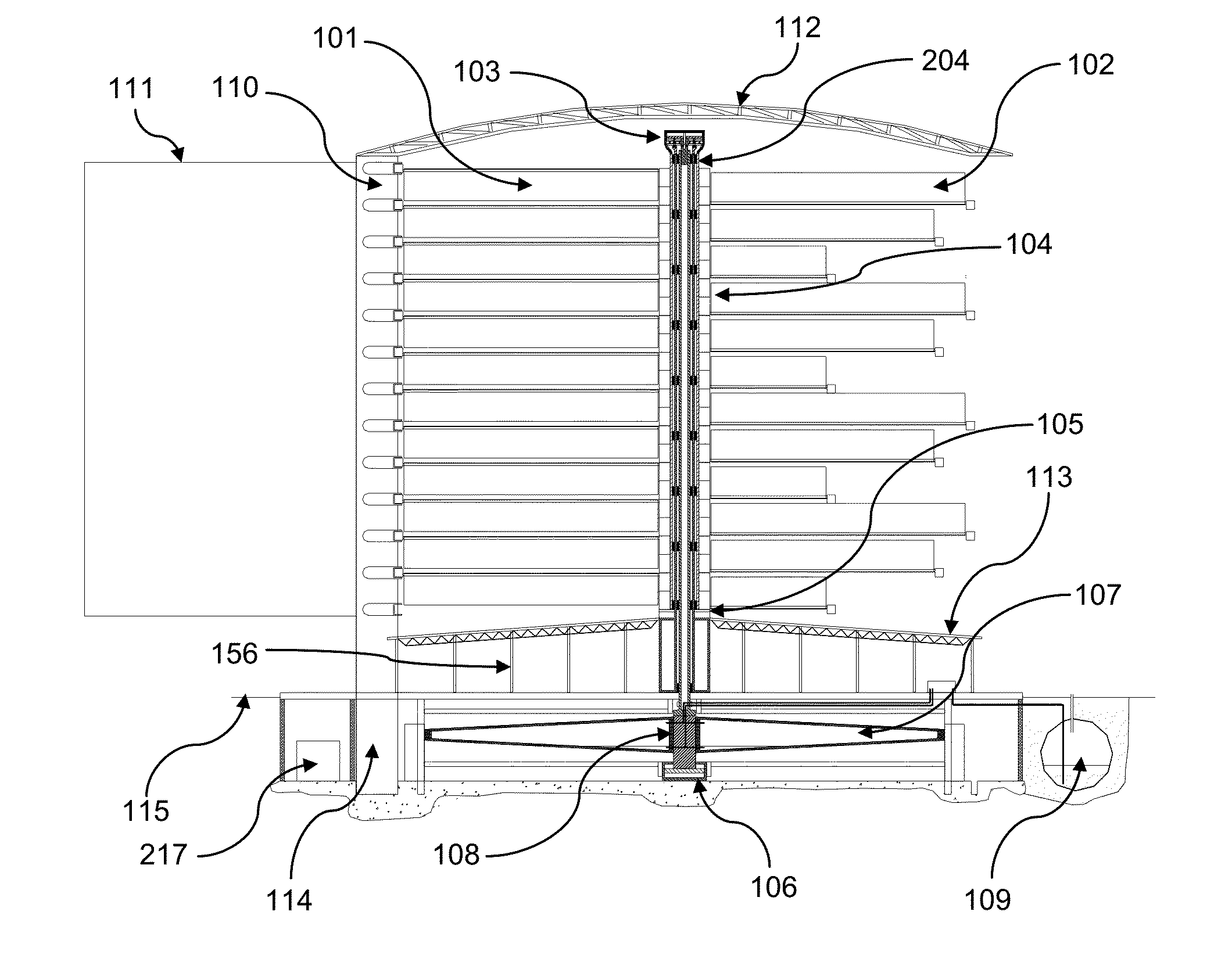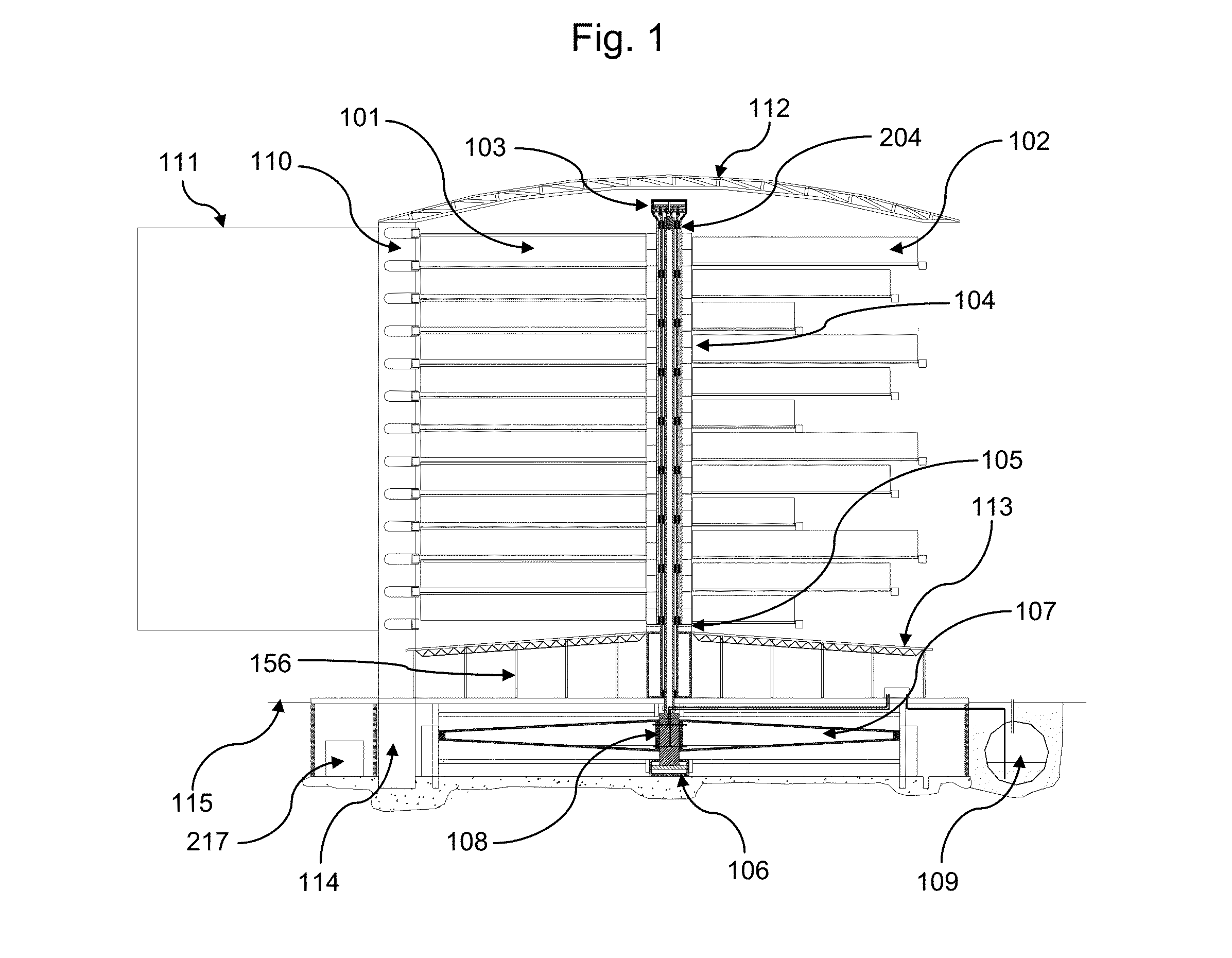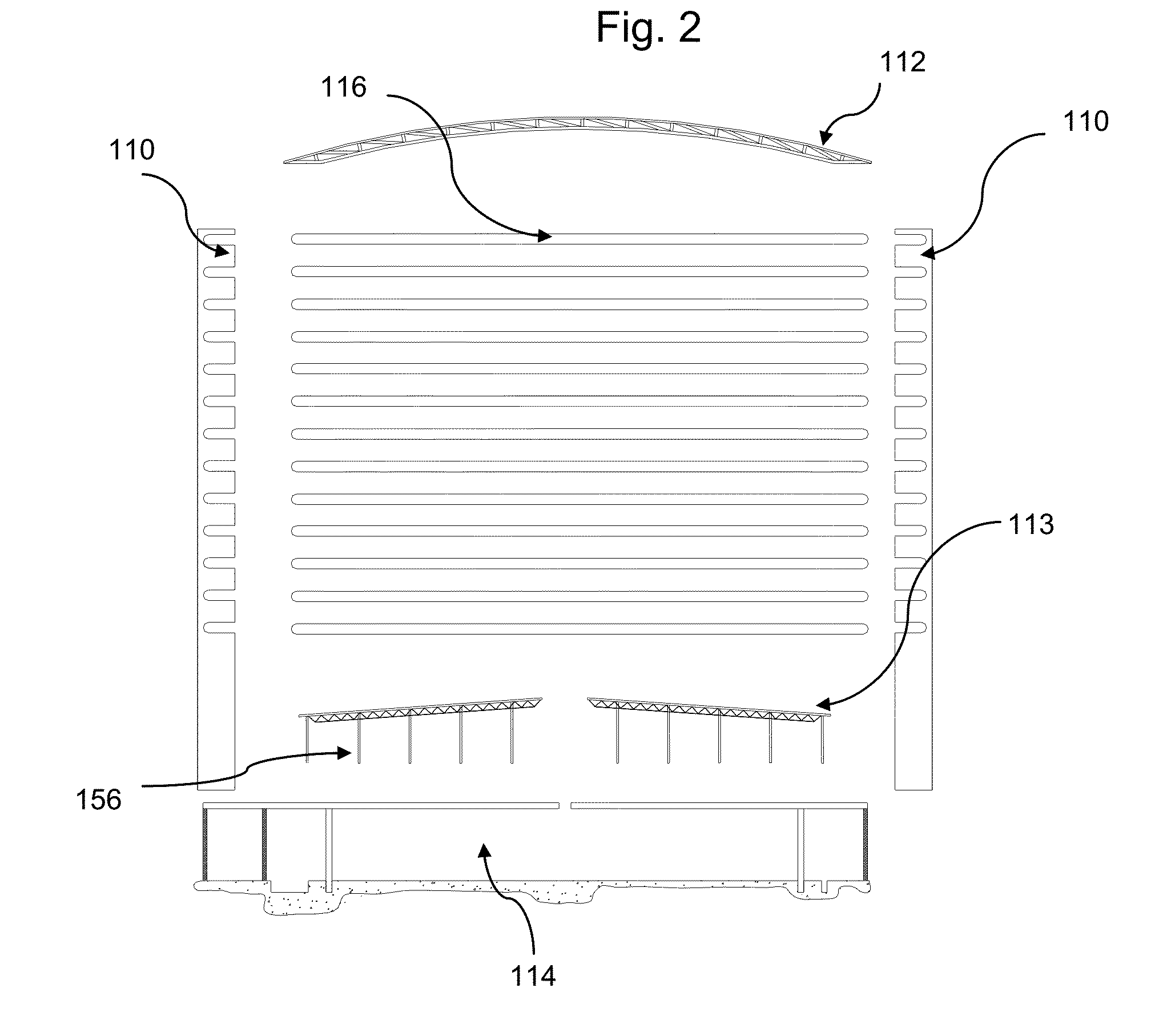Vertial axis wind/solar turbine
a solar turbine and wind turbine technology, applied in the direction of renewable energy generation, electric generator control, greenhouse gas reduction, etc., can solve the problems of unreliable output, unsuitable base load grid level power, and hawt wind turbine system
- Summary
- Abstract
- Description
- Claims
- Application Information
AI Technical Summary
Benefits of technology
Problems solved by technology
Method used
Image
Examples
Embodiment Construction
[0211]The basic construction of the VAST is a building like structure, and in this version it is about 250 feet tall, about 300 feet in diameter closed and about 550 feet in diameter with the wings open. This structure is a modified Vertical Axis Wind Turbine (VAWT) designed to maximize wind collection and to supplement that energy collection by the use of solar PV panels; both energy sources which are then stored in a large flywheel with variable mass running at slow speed. The wind collection system in this embodiment is comprised of 10 sets of counter rotation energy collection panels mounted on each collar, and each set has two segments of 4 panels each rotating in opposite directions. Each energy collection panel orientation is controlled by a servo / stepper motor and is made from a series of suitable high efficiency solar PV panels, 15 for each panel in this embodiment.
[0212]By making the energy collection panels dual purpose, the VAST has a much higher up time then either wind...
PUM
 Login to View More
Login to View More Abstract
Description
Claims
Application Information
 Login to View More
Login to View More - R&D
- Intellectual Property
- Life Sciences
- Materials
- Tech Scout
- Unparalleled Data Quality
- Higher Quality Content
- 60% Fewer Hallucinations
Browse by: Latest US Patents, China's latest patents, Technical Efficacy Thesaurus, Application Domain, Technology Topic, Popular Technical Reports.
© 2025 PatSnap. All rights reserved.Legal|Privacy policy|Modern Slavery Act Transparency Statement|Sitemap|About US| Contact US: help@patsnap.com



